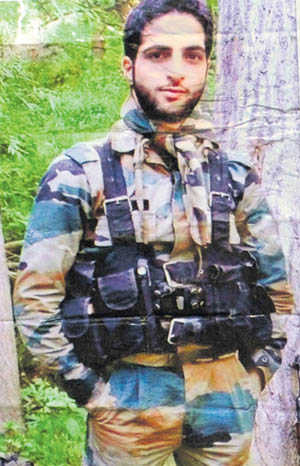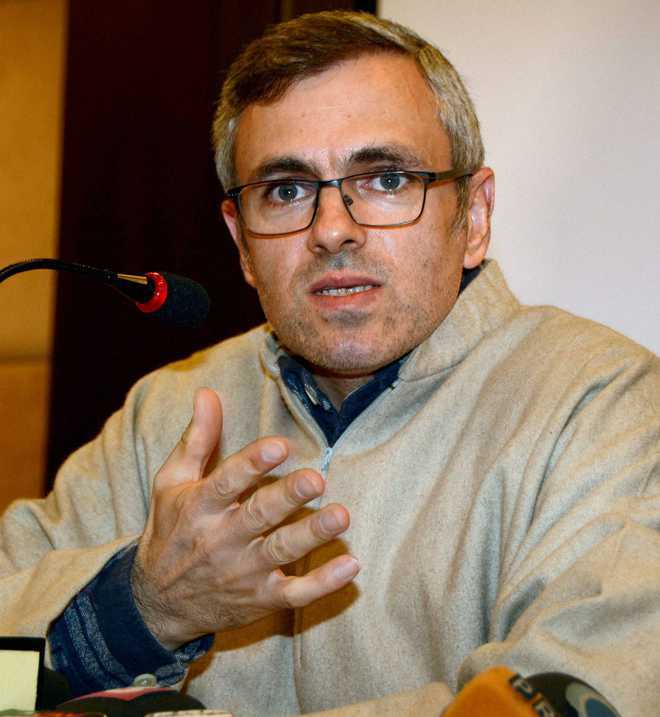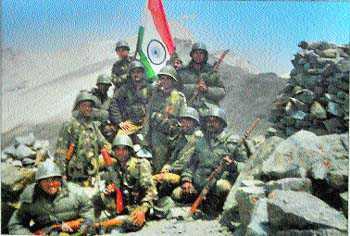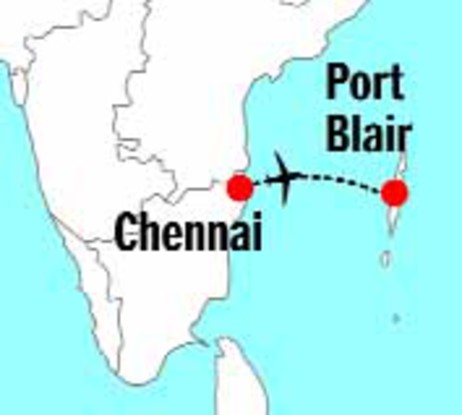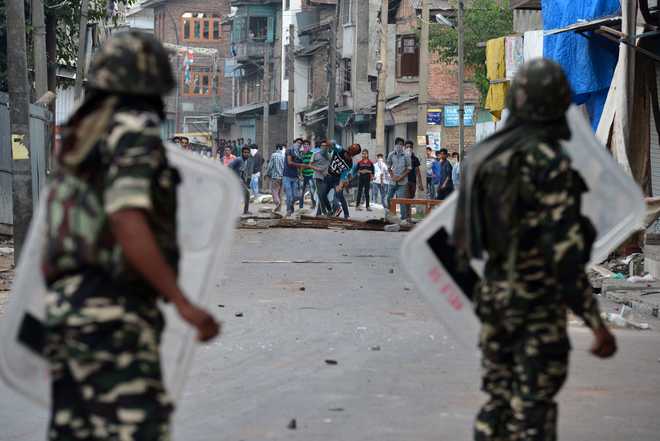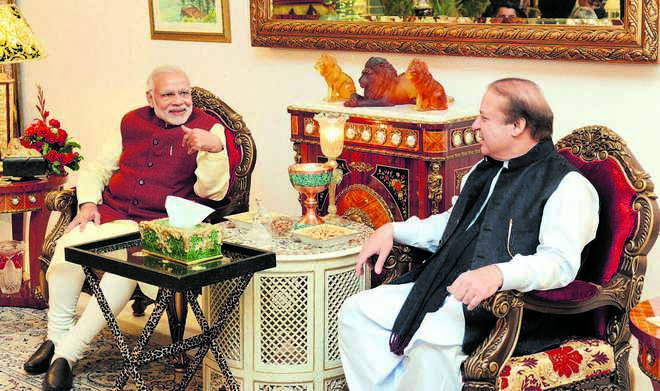
Dead End: Nawaz Sharif is being increasingly constrained.
OVER the next few weeks, Prime Minister Narendra Modi and his advisers will have to take a hard look on how to proceed with India-Pakistan bilateral relations. The first decision to be taken relates to Home Minister Rajnath Singh’s visit to Islamabad for the SAARC home ministers’ meeting to be held on August 4. Confirming that the meeting is being held, External Affairs Ministry spokesperson Vikas Swarup cautiously said Singh’s visit was under consideration. Even if Rajnath Singh travels only for the SAARC meeting, the media focus will inevitably be on India-Pakistan ties. It is customary for a visiting SAARC minister to meet his host bilaterally on the sidelines of the meeting. Thus Singh could hardly avoid meeting Pakistan interior minister Nisar Ali Khan. Such an interaction, even if it is brief, will overshadow everything else. During and after such a meeting, the main issues of bilateral contention — the lack of progress in the Mumbai attack trials, Pakistan’s silence on the Pathankot attack even after the JIT trip to India, increased levels of infiltration in J&K and the Kulbhushan Jadhav concoction — would acquire renewed salience. If India avoids a Rajnath Singh-Nisar Ali Khan bilateral meeting, it would only profile that relations are at an extremely low ebb. On account of these considerations, Modi will need to take a comprehensive view on what he wishes to do with Pakistan. Besides, with the SAARC Summit to take place in Islamabad in November, questions will also inescapably be raised about Modi’s participation in it. As Modi considers his Pakistani policy, he would cast an eye on the Pakistani scene. His counterpart PM Nawaz Sharif, with whom he has struck a positive chord, has substantially weakened both physically and politically. He is recovering from an open heart surgery. While it has been successful, it will take an inevitable toll, reducing Sharif’s energy at a time when he needs to be in prime vigour to extricate himself from the Panama Papers quagmire. The opposition parties led by Imran Khan have smelt blood and have stymied Sharif’s moves. The supreme court chief justice has declined to establish a court inquiry under the present rules. Above all the army, subtly but effectively, has put Sharif on the mat by hinting at the need for probity in public life.Already controlling Pakistan’s security and sensitive areas of its foreign policy, especially concerning India, army chief Gen Raheel Sharif has reinforced his larger-than-life image. He is by far the most popular and trusted public person in the country. Raheel Sharif’s term comes to a close in November. To end speculation if he will insist on another three- year period, an official announcement was made at his behest some months ago that he will retire in November. Some knowledgeable Pakistanis, including retired generals, had emphasised then that this was likely as Raheel Sharif was unlikely to take any step that would cast a shadow on the heroic image of his family. That public respect has been earned by his maternal uncle and brother, both of whom were posthumously awarded Pakistan’s highest gallantry awards in wars against India. However, doubts are now emerging about his intentions as nothing has been heard about his retirement for many months now. Even if Raheel Sharif goes, his successor, even one handpicked by Nawaz Sharif, will continue to follow the army’s basic negative approach to India.In a recent interview, Modi alluded to the Indian dilemma in dealing with two separate power centres in Pakistan. Expectedly, Pakistani spokespersons stressed that the country’s institutions act as one. This is also the mistake that Indian policy makers made in the closing months of 2015 when they thought that the Pakistan army was in agreement with Nawaz Sharif’s ostensible desire to open up with India. The Pathankot attack halted that process. Thus it is all to the good that Modi has now realised the true nature of Pakistan decision making on India. It is always prudent for an Indian Prime Minister to be conscious that in dealing with his Pakistani counterpart he is not doing business with an equal but with an interlocutor controlled in large measure by the generals. Pakistan is repeatedly calling on India to begin the Comprehensive Bilateral Dialogue process that was agreed between the two countries last December. The two foreign secretaries were to meet to work out its modalities. The Indian position is that it is awaiting concrete action by Pakistan on the Pathankot attack. India has stressed that Pakistan has not denied the involvement of its nationals. This is true but it has so far not acknowledged that fact. Interestingly, in a recent weekly briefing, the official spokesperson did not refer to India’s demand for an NIA team’s visit to Pakistan. It is also noteworthy that while he recalled India’s request for consular access to Kulbhushan Jadhav, he did not link it to the resumption of the dialogue process. The central point is that the government has not given any clarity on what it expects Pakistan to do. Is it that it expects it to arrest some individuals and prosecute them? If so, in what courts, civil or military? These are important issues, for India’s objective has to be to ensure that the Pathankot does not go the Mumbai way. If in the quest to defreeze relations, it will be a pity if India does not show resolve on Pathankot and the Kulbhushan Jadhav matter. It will only add to the Pakistani generals feeling that India under Modi can be pushed, as it was during earlier dispensations.There are a few other points that Modi needs to consider. Pakistan is on a high for it feels that it has been instrumental, through China, in preventing India from succeeding on becoming a NSG participating state at Seoul. The China-Pakistan Economic Corridor will add to the cement of the relationship. Despite the recent downturn in the US-Pakistan ties, the China factor will make the generals more obdurate on India. Modi wishes to expedite SAARC integrative processes. This is a legitimate aspiration but past experience has shown that SAARC has not contributed to South Asian integration because of Pakistani intransigence. The sub-regional processes undertaken by India offer the way, even if partial, to give SAARC more teeth.Perhaps the prudent course would be to go ahead with Rajnath Singh’s Islamabad visit and a meeting with Nisar Ali Khan. During this meeting, the Indian message should be firm and unrelenting. It can also be spelt out that the Prime Minister’s participation in the SAARC Summit would depend on Pakistan meeting all of India’s concerns.The writer is a former Secretary, Ministry of External Affairs












